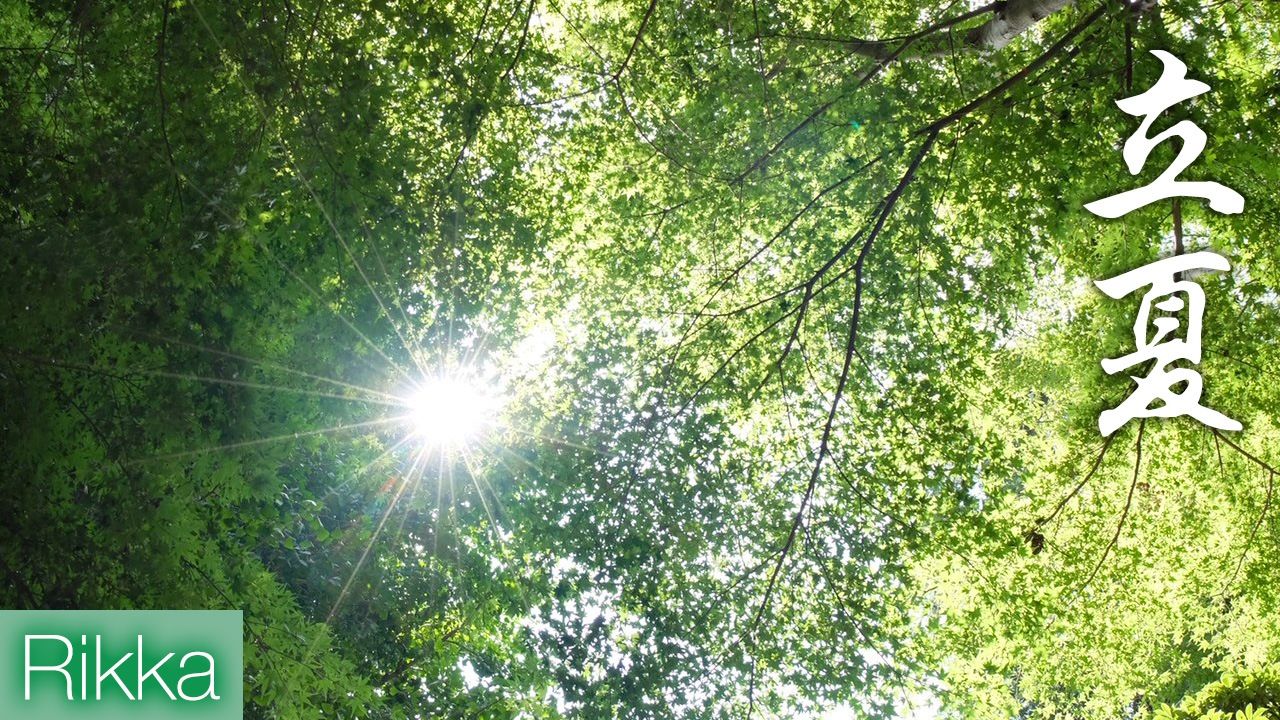
Rikka (Beginning of Summer)
Culture Society History Environment- English
- 日本語
- 简体字
- 繁體字
- Français
- Español
- العربية
- Русский
Rikka (Beginning of Summer) opens a new season in Japan’s 24 solar terms. In the modern calendar, it falls on about May 6, and summer is said to continue until Risshū around August 8. Although the height of summer is still far off, animals and other creatures are full of vitality, and the fresh greenery is vibrant. It is also the start of the leisure season.
This article will look at events and natural phenomena in the period roughly from May 6 to 20.
Kunpū (Fragrant Winds)
The beginning of summer is marked by clear skies and warm weather, and is generally comfortable. Seasonal fresh winds are known as kunpū, a term used in haiku. The fragrance inhaled during relaxing forest walks, or shinrinyoku, derives from emissions of phytoncides, said to have antibacterial effects. The rain that falls on the trees also features in poetry.
Hototogisu
Hototogisu, the lesser cuckoo, announces the arrival of summer, and many poems about the bird featured in classic poetry anthologies. The first cry of the hototogisu is called shinobine, (the concealed sound).
When Gyokudō Yanagihara (1867–1957), a disciple of poet Masaoka Shiki (1867–1902), published Japan’s first haiku magazine in 1897, he named it Hototogisu. It established itself under its first two editors Shiki and Takahama Kyoshi. Publication has continued until this day, and has also included such noted works of fiction as Wagahai wa neko de aru (I Am a Cat) and Botchan by Natsume Sōseki.
A collection of essays published in the late Edo period (1821-41) entitled Kasshiyawa compares the characters of Japan’s military commanders in the Warring States period (1467–1568) when confronted with a hototogisu that would not sing.
If the cuckoo doesn’t sing, kill it (Oda Nobunaga)
If the cuckoo doesn’t sing, force it to (Toyotomi Hideyoshi)
If the cuckoo doesn’t sing, wait till it does (Tokugawa Ieyasu)
The chirp of the lesser cuckoo.
Cormorant fishing on Nagara River (May 11–October 15)
Cormorant night river fishing is a traditional technique using trained cormorants and watch fires lit on boats. The method has been used on the Nagara River since the Nara period (710–794), and is listed in Japan as an important intangible folk-cultural property. It takes advantage of the cormorant’s trait of swallowing fish whole without biting, using a rope around the bird’s neck to prevent it from consuming any ayu sweetfish it catches; it is then made to cough them up.
Fishing is permitted from May 11 until October 15. Nagara River’s cormorant fishers are public servants attached to the Imperial Household Agency, and they offer up sweetfish to the imperial family.
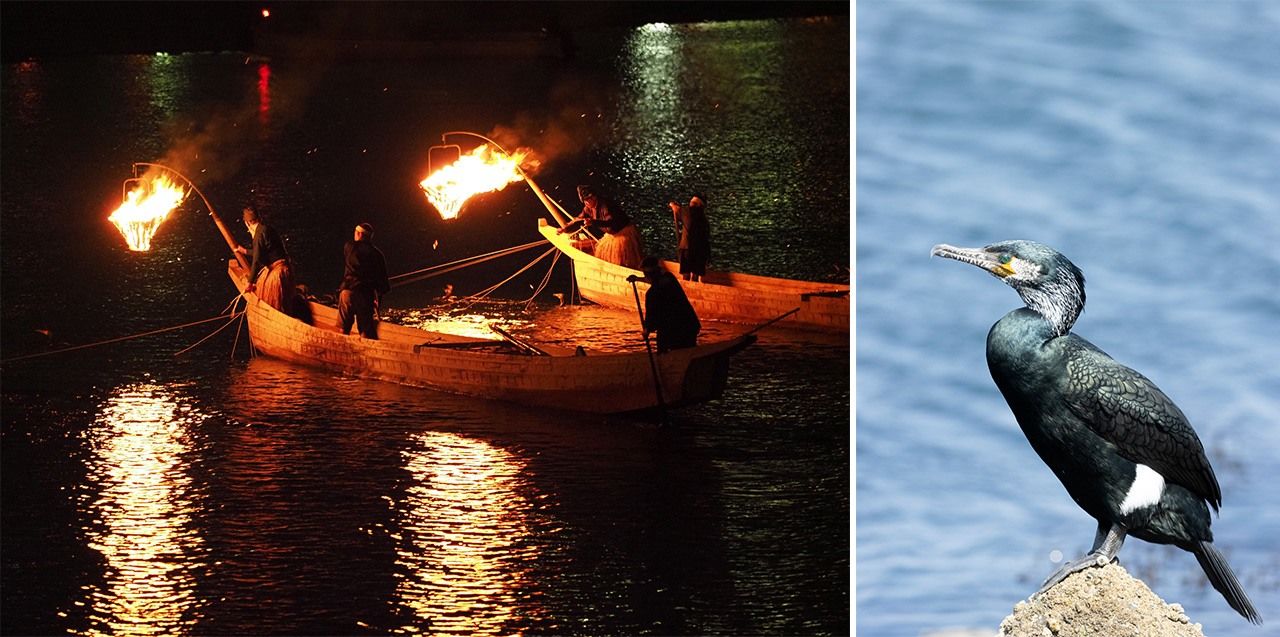
Cormorant fishing on Nagara River (left); a cormorant. (© Pixta)
Bird Week (May 10–16)
May 10 to 16 each year is Bird Week, an event established by the Japanese Society for Preservation of Birds to show appreciation for feathered friends.
Sanja Matsuri, Asakusa, Tokyo
Asakusa Shrine’s annual Sanja Matsuri is ranked among Tokyo’s three great festivals. It started in 1312 and is held over the third weekend in May. During the event, women and men dressed in happi coats shoulder over 100 portable shrines in the streets. On the first day, a ceremony is performed to admit the god into the portable shrines, day two features a grand parade, and on the third day, three shrines are carried around the neighborhood. The procession through Kaminarimon gate is of particular note. The gate’s giant paper lantern is folded up, and the portable shrine is ferried through with great gusto.
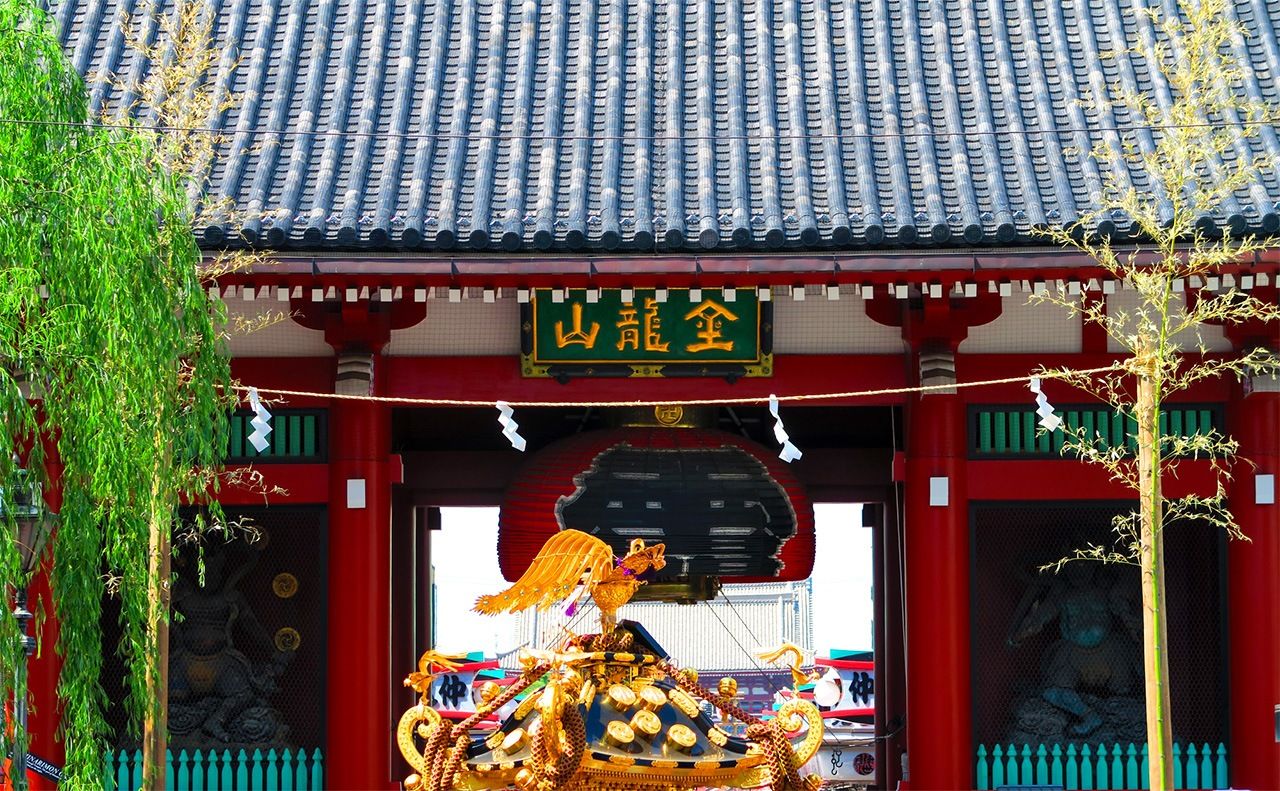
During the Sanja Matsuri, the Kaminarimon’s paper lantern is folded up to allow the portable shrine to pass through. (© Pixta)
Aoi Festival, Kyoto (May 15)
This festival, ranked among Kyoto’s top three, takes place between Shimogamo and Kamigamo Shrines. The event is said to have originated in the reign of Emperor Kinmei (540–571), during which the country was beset by crop failure, starvation, and epidemic. Although the tradition was not maintained during the Kamakura (1185–1333) and Muromachi (1336–1573) periods, it was reintroduced in the Genroku era (1688–1704). On May 15, a great procession takes place over eight kilometers from Kyoto Imperial Palace to Kamigamo Shrine, with more than 500 people dressed in Heian period (794–1185) aristocratic attire. The festival is named after the aoi or hollyhock used to decorate the ox-drawn cart and bamboo curtains that feature in the parade.
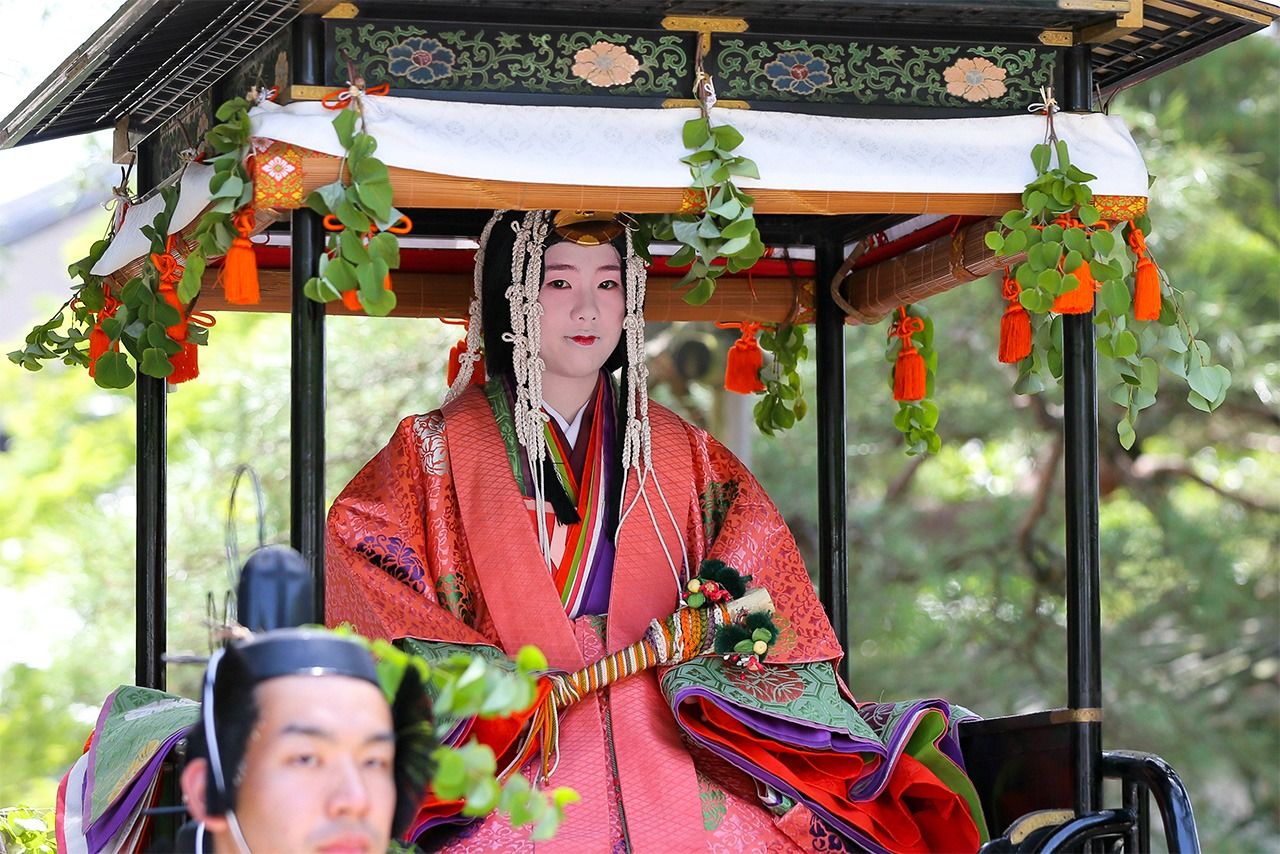
Aoi Festival is a Heian-style procession marking early summer. In ancient times, an unmarried imperial princess served at Kamo Shrine on behalf of the emperor, but nowadays, an unmarried young woman is chosen to perform this role in the festival, adorned in a twelve-layered ceremonial kimono. May 15, 2018 (© Jiji)
Mother’s Day
The second Sunday in May is Mother’s Day. The custom began in the United States, and later spread to Japan. There is a tradition in Japan of giving a red carnation for Mother’s Day, but recently people are choosing various colors.
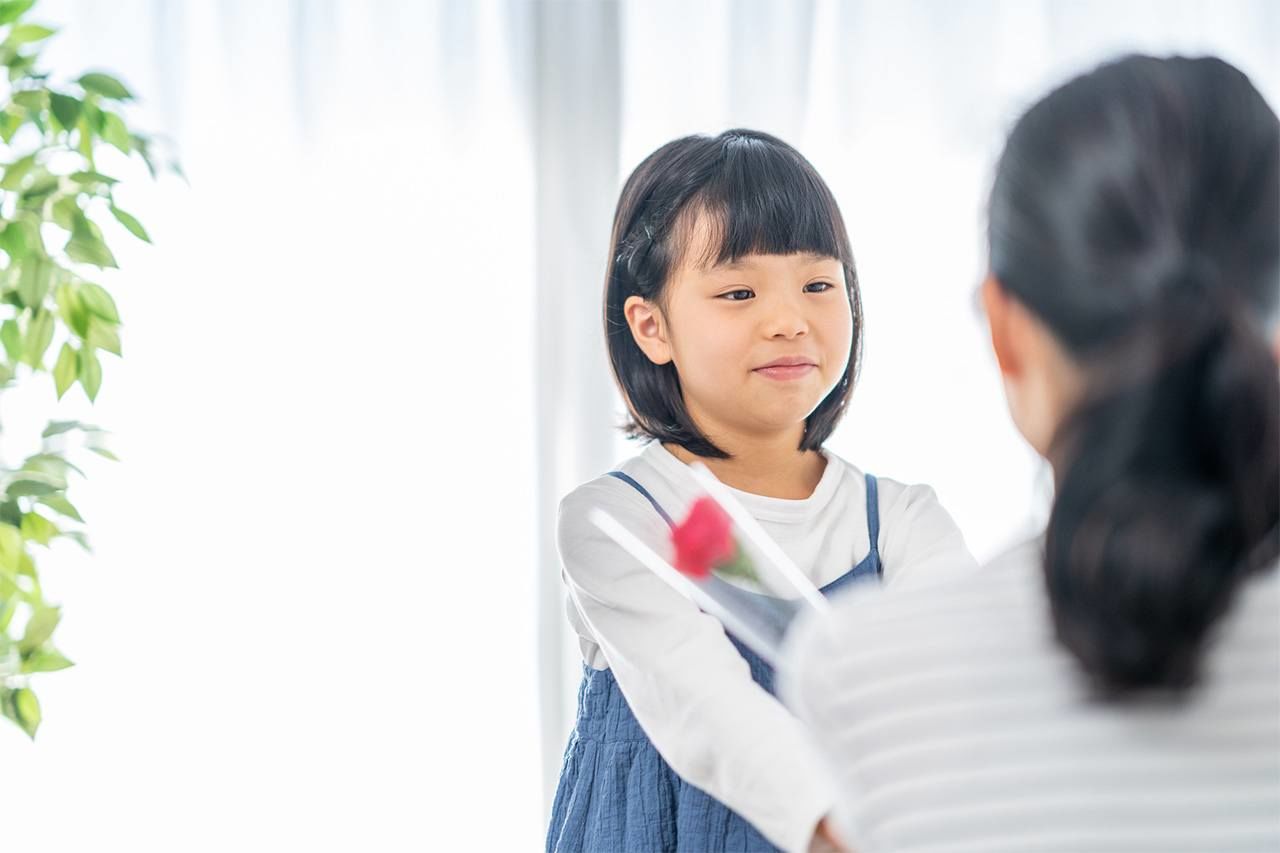
A red carnation is a common Mother’s Day gift. (© Pixta)
Takenoko (Bamboo Shoots)
The kanji for takenoko (筍) combines characters symbolizing “in season” and “bamboo.” Because it grows rapidly, the bamboo shoot season is short. It must be eaten soon after harvest or the taste becomes astringent. Bamboo shoots are commonly served as tempura, steamed with rice, stewed, added to clear soup, or grilled.
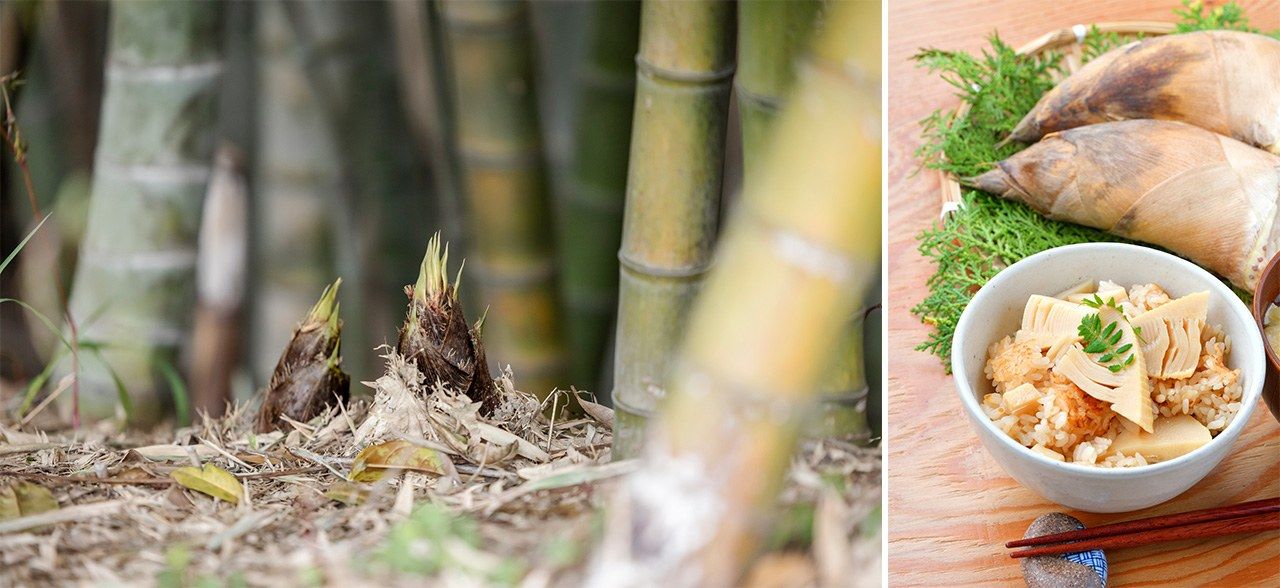
Bamboo shoots (left) and steamed rice with bamboo shoots. (© Pixta)
(Supervised by Inoue Shōei, calendar researcher and author, Shintō minister, and guest lecturer at Tōhoku Fukushi University. Banner photo: Green maple leaves in early summer.)
Asakusa bamboo Sanja Matsuri Masaoka Shiki solar terms Rikka cormorant fishing Aoi Festival Hototogisu